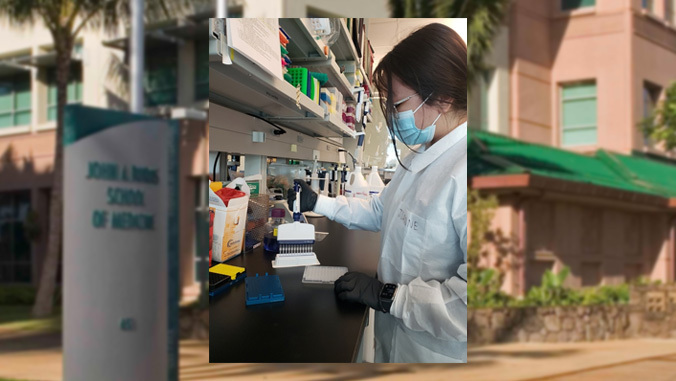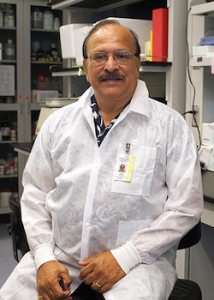
A federal initiative seeking to recruit and mentor STEM students from underrepresented backgrounds toward pursuing careers in biomedical research has awarded the University of Hawaiʻi at Mānoa a five-year, $2 million grant.
The National Institutes of Health’s “Maximizing Access to Research Careers” (MARC) grant will enable UH Mānoa faculty from the College of Natural Sciences, College of Tropical Agriculture and Human Resources, John A. Burns School of Medicine (JABSOM), Pacific Biosciences Research Center, UH Cancer Center and the School of Ocean and Earth Science and Technology to select 30 (six per year) undergraduate students in their junior or senior years to enroll in a two-year MARC@UHM program that pairs trainees with research mentors.
The mission of MARC@UHM is to provide paid training in biological research for a diverse group of students, including Hawaiian/Part Hawaiian, other Pacific Islanders (Samoan, Tongan, Micronesian, Guamanian/Chamorro, mixed Pacific Islander), Filipino, Latinx, African American; under-represented Asians (e.g., Cambodian, Vietnamese, Laotian); those from disadvantaged backgrounds, including low social-economic and residents of rural outer islands; and students with apparent and non-apparent disabilities.
Addressing inequities through training

According to the Chronicle of Higher Education, the undergraduate student body and faculty at UH Mānoa is the most diverse in the nation, but inequities persist. Only 8.5% of PhD candidates in STEM-related programs at UH Mānoa are from under-represented backgrounds. Additionally, a considerable number of these students do not apply to STEM-related PhD programs at UH. As a result, their cultures have little involvement in our nation’s workforce. This program seeks to increase their numbers in scientific research.
Participating in MARC@UHM are more than 25 Mānoa faculty and 10 faculty at other institutions. They represent diverse backgrounds in ethnicity, age, gender and rank.
Serving as principal investigator on the grant is Vivek R. Nerurkar, professor and chair of the JABSOM Department of Tropical Medicine, Medical Microbiology and Pharmacology.
“The primary outcome measure will be the number of trainees graduating with BA/BS in four years who transition to research-intensive graduate programs,” said Nerurkar. “Thus, MARC@UHM seeks to increase Hawaiʻi’s under-represented citizens who transition to research careers, and bring their diverse cultural backgrounds, life experiences, ideas and interests to biomedical research.”
More on MARC@UHM
Objectives:
- Enroll six students in their junior or senior year of college annually and teach them to identify important research questions, design and conduct rigorous and reproducible experiments, and analyze data and interpret results
- Provide each trainee with four semesters of paid, mentored research and a summer research experience
- Develop skills trainees need to be competitive in graduate school and in careers as research professionals
- Assist each trainee in applying to at least five graduate school programs early in the senior year
The two-year MARC@UHM program for juniors and seniors begins with a summer workshop, which includes a two-credit course each semester designed specifically for MARC trainees, four semesters of mentored research, a summer research experience (either at UH Mānoa or working with a collaborator of their UH mentor at an external site), a short workshop, attending an annual national meeting and presenting their research at professional meetings.
The rolling application deadline is October 8. Students who meet the qualifications can apply here. All questions regarding the MARC@UHM application process or the program can be directed to uhm-marc@lists.hawaii.edu.
This is an example of UH Mānoa’s goal of Enhancing Student Success (PDF), and Excellence in Research: Advancing the Research and Creative Work Enterprise (PDF), two of four goals identified in the 2015–25 Strategic Plan (PDF), updated in December 2020.

